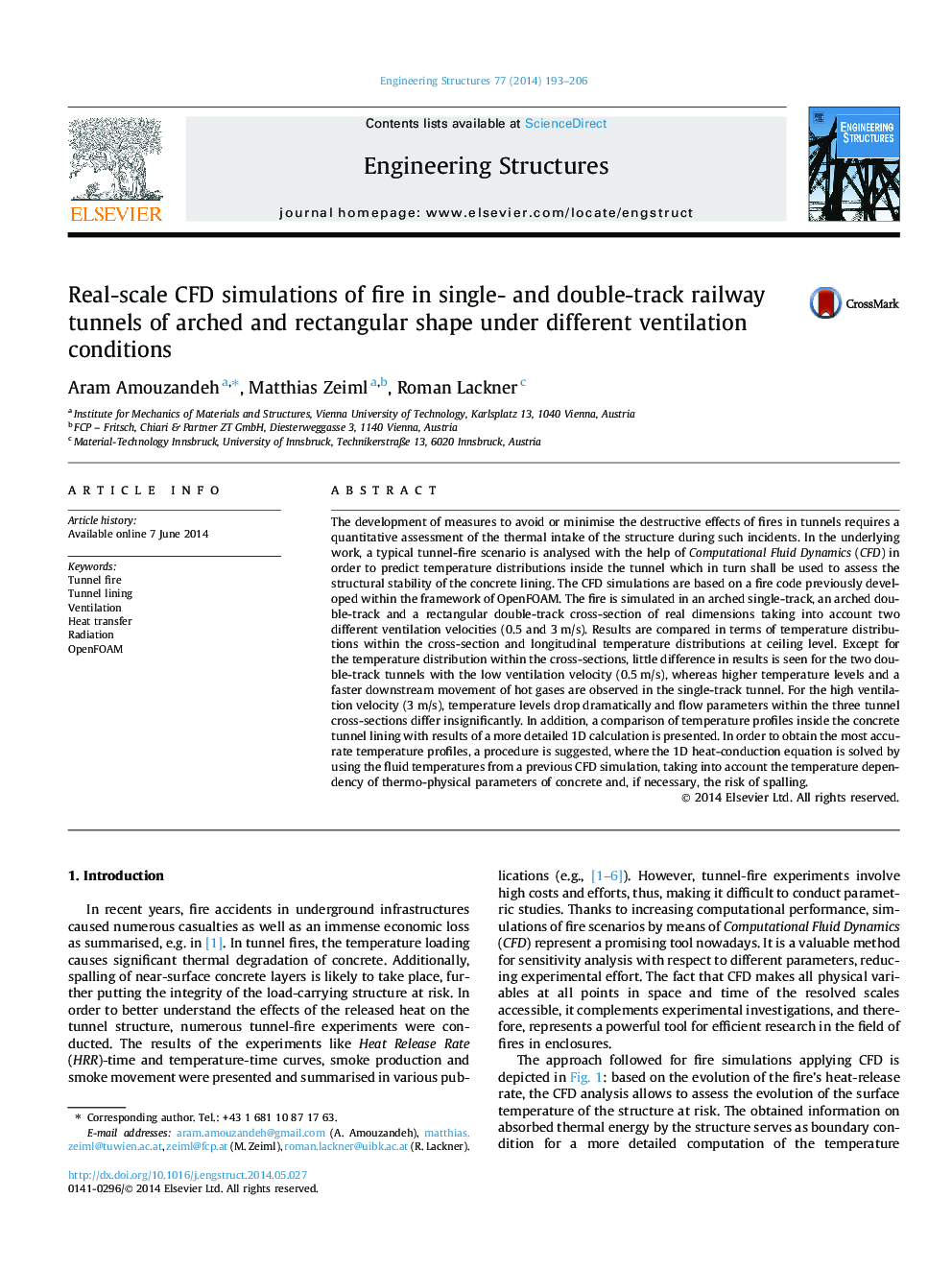| کد مقاله | کد نشریه | سال انتشار | مقاله انگلیسی | نسخه تمام متن |
|---|---|---|---|---|
| 266543 | 504367 | 2014 | 14 صفحه PDF | دانلود رایگان |

• Analysis of a tunnel fire with previously developed CFD-code.
• Consideration of different types of tunnel cross-sections at real scale.
• Consideration of two different ventilation conditions (0.5 and 3 m/s).
• Higher temperatures in single-track than double-track tunnel for 0.5 m/s.
• Simular temperatures for all studied tunnel geometries for 3 m/s.
The development of measures to avoid or minimise the destructive effects of fires in tunnels requires a quantitative assessment of the thermal intake of the structure during such incidents. In the underlying work, a typical tunnel-fire scenario is analysed with the help of Computational Fluid Dynamics (CFD) in order to predict temperature distributions inside the tunnel which in turn shall be used to assess the structural stability of the concrete lining. The CFD simulations are based on a fire code previously developed within the framework of OpenFOAM. The fire is simulated in an arched single-track, an arched double-track and a rectangular double-track cross-section of real dimensions taking into account two different ventilation velocities (0.5 and 3 m/s). Results are compared in terms of temperature distributions within the cross-section and longitudinal temperature distributions at ceiling level. Except for the temperature distribution within the cross-sections, little difference in results is seen for the two double-track tunnels with the low ventilation velocity (0.5 m/s), whereas higher temperature levels and a faster downstream movement of hot gases are observed in the single-track tunnel. For the high ventilation velocity (3 m/s), temperature levels drop dramatically and flow parameters within the three tunnel cross-sections differ insignificantly. In addition, a comparison of temperature profiles inside the concrete tunnel lining with results of a more detailed 1D calculation is presented. In order to obtain the most accurate temperature profiles, a procedure is suggested, where the 1D heat-conduction equation is solved by using the fluid temperatures from a previous CFD simulation, taking into account the temperature dependency of thermo-physical parameters of concrete and, if necessary, the risk of spalling.
Journal: Engineering Structures - Volume 77, 15 October 2014, Pages 193–206